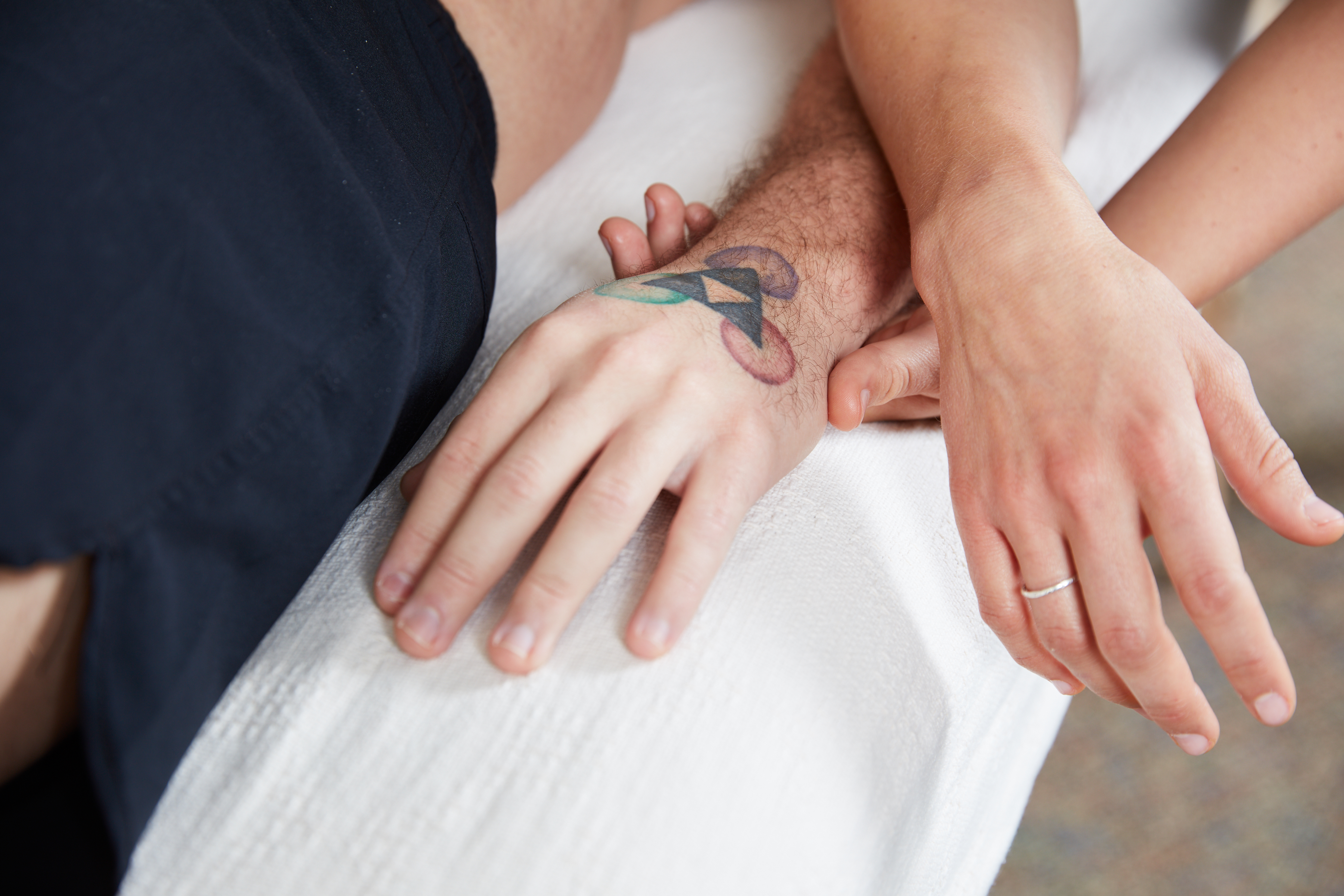Dr. Ida Rolf Institute News
Rolfing® for Carpal Tunnel Relief | Improve Posture & Reduce Nerve Compression

Rolfing® for Carpal Tunnel Syndrome Relief
Carpal Tunnel Syndrome (CTS) can cause tingling, numbness, burning sensations, and weakness in the hand or fingers—often making daily tasks uncomfortable or even painful. While wrist strain is a factor, posture plays a critical role. Forward head position, rounded shoulders, and a curved upper back can place additional stress on the median nerve, which runs from the neck through the arm to the hand.
Rolfing® Structural Integration offers a whole-body approach to relief. By improving alignment, releasing chronic tension in the fascia, and restoring mobility from head to hand, Rolfing® may help reduce nerve compression and promote lasting comfort.
How Poor Posture, Repetitive Use and Thoracic Outlet Syndrome Relate to Carpal Tunnel Syndrome
In many cases, Carpal Tunnel Syndrome is part of a bigger picture. Poor postural habits—such as forward head position, rounded shoulders, and a curved upper back—can increase strain along the entire median nerve pathway. This nerve begins at the neck, passes through the shoulder and arm, and travels into the hand. When posture is compromised, nerve compression can occur not only at the wrist but also higher up in the body.
Some people with CTS share symptoms with Thoracic Outlet Syndrome (TOS)—a condition where nerves or blood vessels are compressed in the space between the collarbone and first rib. TOS can cause neck and shoulder pain, arm weakness, and numbness or tingling in the fingers. It may be triggered by trauma (such as a car accident), repetitive motion, certain sports, or even changes during pregnancy.
By improving alignment from head to toe, Rolfing® Structural Integration works to relieve strain at multiple points along the nerve pathway—not just the site of wrist pain—offering a more comprehensive approach to recovery.
How Rolfing® Structural Integration Addresses Carpal Tunnel Syndrome
Rolfing® Structural Integration is a hands-on process that works with the body’s fascia—the connective tissue that surrounds muscles, nerves, and organs. For Carpal Tunnel Syndrome, a Certified Rolfer™ may focus on restoring mobility and length in the forearm, wrist, and hand, while also addressing tension patterns in the neck, shoulders, and upper back that can contribute to nerve compression.
Using precise, sustained pressure, the Rolfer™ helps release restrictions in the fascia and improve overall alignment. As posture and biomechanics improve, stress on the median nerve may be reduced, allowing for greater comfort and mobility.
While some people notice changes quickly, lasting results are often best achieved through the Rolfing Ten-Series®—a structured progression of ten sessions designed to integrate the entire body. This approach is not limited to symptom relief; it aims to rebalance movement patterns, reduce chronic tension, and create the structural support needed for long-term well-being.
Research and Resources on Carpal Tunnel Syndrome and Rolfing®
For those who want to explore the science behind Carpal Tunnel Syndrome and the role of fascia in nerve health, this study offers deeper insight.
In a laboratory study published in the Journal of the American Osteopathic Association, repetitive strain was found to damage fibroblasts—the connective tissue cells within fascia—while a manual therapy technique similar to myofascial release restored normal cell structure and reduced cell death. These findings help explain how approaches like Rolfing® Structural Integration may counteract the effects of repetitive motion injuries such as Carpal Tunnel Syndrome.
Experience Relief Through Rolfing® Structural Integration
Carpal Tunnel Syndrome doesn’t have to limit your comfort, mobility, or daily activities. By addressing the root causes of nerve compression—often found far beyond the wrist—Rolfing® Structural Integration offers a whole-body approach to restoring balance, improving posture, and reducing tension.
Every session is tailored to your needs, helping you move with greater ease and resilience.
Find a Certified Rolfer™ Near You and take the first step toward lasting relief.